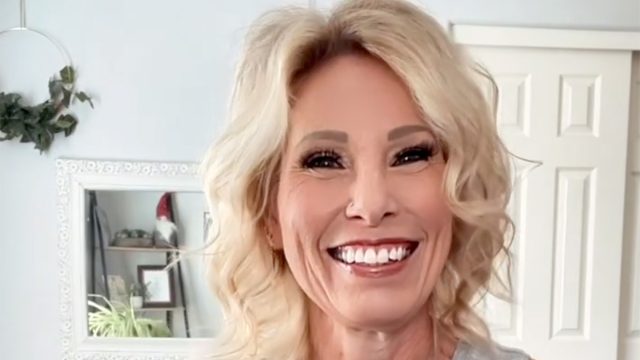Coach Who Lost 15 Pounds Reveals 3 Simple Fat Loss Truths

Are you overcomplicating weight loss, stunting your results? Lois Hughey is a weight loss warrior and coach who lost 15 pounds and kept it off. Now, she makes it her mission to help women over 50 "simplify nutrition and fitness" and regularly offers tips for sustainable fat loss in menopause on her social media feeds. In a new post, she reveals that fat burning and muscle building don't have to be complicated. "I wish more women over 50 understood that losing fat and building muscle is as simple as these 3 things," she says. "There is a lot of noise around what to do and what not to do in mid-life, but these 3 simple things will make a huge difference," she adds.
Spend Less Time Doing Cardio, and More Time Building Muscle
Her first truth is you need to spend less time doing cardio and more time building muscle. "You don't have to stop doing cardio, but it's not helping you build muscle… and neither is yoga or pilates. You have to lift some heavy things. Even if it scares you. The body you want has muscle on it," she writes.
Building Muscle Will Help You Burn Fat While You Are Doing Nothing
"Perimenopause is a season of rapid muscle loss if you aren't doing something to maintain and build it. Women with muscle live longer and reduce their risk of heart disease," she continues. "I'll say it again and again… muscle is metabolically active. If you want to burn fat lying on the couch, start building some muscle."
Stop Under Eating
Next, stop under eating. "You can't keep eating less and less. Your body is smart and will eventually just learn how to use less energy, which is going to make fat loss really hard. Eat enough food for YOUR body. This is going to be specific to YOU, so be careful about anyone who tells you that all women need to eat more than 2,000 calories," she says.
Under Eating Will Not Serve Your Fat Loss Goals
"Most women in their 50s who have been dieting their whole lives are going to struggle with 2000 calories unless they are very active. But your maintenance calories are almost certainly higher than you think they are. Under eating is not serving your fat loss goals," she continues.
Don't Be Afraid of Carbs
Her third tip? Don't be afraid of carbs."Not all carbs are created equal, so be smart about the ones you choose. Whole food carbs have the benefit of fiber, which you definitely need, so look for whole grains, fruit, and both starchy and non-starchy veggies. If your goal is to calm cortisol, have more energy, and get your metabolism working the way you want it to, you need some carbs!" she writes. "Obviously not a comprehensive list, and a (strategic) calorie deficit is needed for fat loss."
Extend Your Time Line
"The bonus piece is always to extend your time line," she adds at the end of the post. "If you have been chronically dieting or moving your calories all over the place for decades, you need to be willing to give yourself at least a year of consistent action before you even consider a calorie deficit." And if you enjoyed this article, don't miss 40 Health Symptoms That Can Be More Serious Than You Think.




